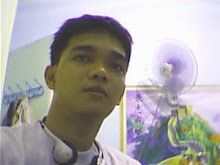As important as it is, skin is basically a two-dimensional tissue, whereas most of the tissues and organs in our body are more complicated. Can engineers make tissue in three dimensions? Last year, as a test of this proposition, Linda Griffith-Cima and her colleagues at MIT created tissue that looked very like a human ear The rationale for this project was provided by Griffith-Cima's collaborator, Dr. Joseph Upton, a plastic surgeon who is frequently in the position of trying to reconstruct an ear for his patients. The outer ear is composed of cartilage and skin. Cartilage is synthesized by a specialized cell called a chondrocyte. Essentially, cartilage is extensive extracellular matrix material secreted by chondrocytes, and composed mainly of collagen, but also including large, spongy carbohydrate chains (glycose amino glycans) as well as some minor proteins. Griffith-Cima seeded isolated chondrocytes onto an artificial matrix composed of biodegradable suture material, shaped into the form of a human ear. After the chondrocytes attached to the matrix in the laboratory, the whole construct was transplanted under the skin on the back of a mutant laboratory mouse, called a nude mouse. In addition to having no hair, nude mice are lacking an immune system organ called the thymus, and as a result, they are almost totally immunodeficient. Nude mice will accept almost any type of graft (researchers have grown feathers on nude mice!). Once implanted in the mouse, the chondrocytes produced cartilage, dissolving the synthetic matrix in the process. The result: an apparent human ear growing out of the back of the mouse! It quickly became "the ear seen round the world."
For the aggressive leader of ATS, Gail Naughton, the press attention given to the vivid image of the ear seems to represent a challenge, or perhaps an opportunity to promote her company, which is also pursuing the possibilities of laboratory engineered cartilage. At the recent BioArtificial Organs conference, Naughton presented her response to the ear on the mouse's back--a very human looking ear implanted into a rabbit where the rabbit's floppy ear ought to be. The effect is grotesque, and calls up sci-fi warnings of technology gone awry. But the message gets through. Yes, tissue in three dimensions can be constructed, and yes, it is stable when placed in the animal (and presumably in a human being). The "human" ear on the rabbit was actually constructed from rabbit chondrocytes--human chondrocytes would have been rejected by the rabbit. The human ear shape was supplied by the synthetic matrix on which the cells were originally grown, and is retained in the transplanted animal even though the original biodegradable matrix has been dissolved and replaced with cartilage. Thus, "rabbit ear shape" is not an inherent property of rabbit chondrocytes. Shape is a property that can be "taught" by the matrix on which the cartilage secreting cells are grown.

No comments:
Post a Comment